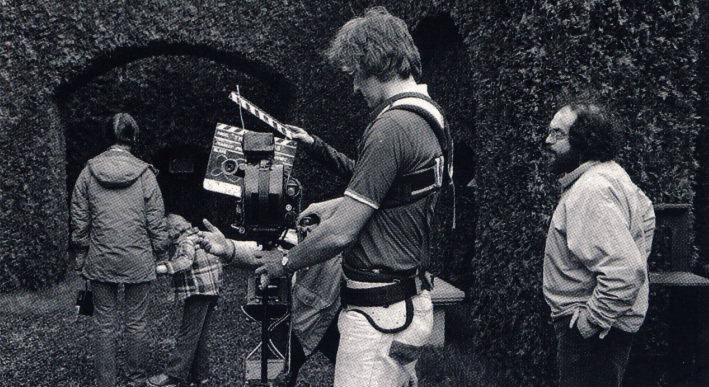Steadicam, which was the first company to produce these inventions in the early 1970's, changed cinematography permanently, causing a phenomenon that produced films whose versatility and use of space was drastically improved. Before the Stadicam's, movement within filmmaking was restricted to two choices for creating a shot: either setting up a dolly system with tracks and wheels (this process was time consuming and monotonous), or shooting the scene handheld (this created shakiness to the frame). By combining mobility, efficiency and fluidity, filmmaking was changed and dramatically improved.
The first film that effectively used the Steadicam was Hal Ashby's Bound For Glory (1975), which won Haskell Wexler an Oscar for Best Cinematography in 1976 for his use of the Steadicam. Following the success of Bound For Glory, many directors started to implement the machinery to their own works and it's popularity spread. Stanley Kubrick, working on The Shining (1980), which would later become a horror classic, saw the expansive possibilities with the Steadicam and created one of the most famous technical film scenes to date. In the shot, we see Danny, a small child, riding his tricycle through the empty hallways of the hotel, having the freedom to explore and glide in and out of the spaces. (You can view the scene below). Kubrick followed the boy on his journey, keeping the camera low to the ground and maintaining a smooth and uninterrupted shot. This gave the illusion that we were on the tricycle with Danny, flying through the hotel with the same sense of freedom he was given. Kubrick, being one of the most well renowned directors of all time and by using the Steadicam, gave credibility to the usability of the device.
34 years after the premier of The Shining, it is hard to find a movie where the Steadicam or a similar version is not used in production. In fact, to be labeled as a professional in the filmmaking arena, Steadicam is a necessity, as it shows a level of class and perfection that isn't present in cheaper films. A mirroring company that has recently gained some popularity with YouTubers, amateur and student filmmakers is the Glidecam. These glidecam rigs are cheaper and lighter, mainly used for small cameras such as the DSLR's and provide those without a large budget on film projects to create a professional look to their usually amateur projects.
Steadicam revolutionized cinematography in the 1970's and 1980's and has carried over to many beautiful shots and films of today. Amateur or Hollywood blockbuster, Steadicam's give audiences visually appealing cinema and provide a better level of efficiency for the filmmakers. To see what the Steadicam looks like in a modern setting from the filmmaker's perspective, check out the Behind the Scenes video from an action sequence in the film Elysium (Neil Blomkamp, 2013) below.


 RSS Feed
RSS Feed
